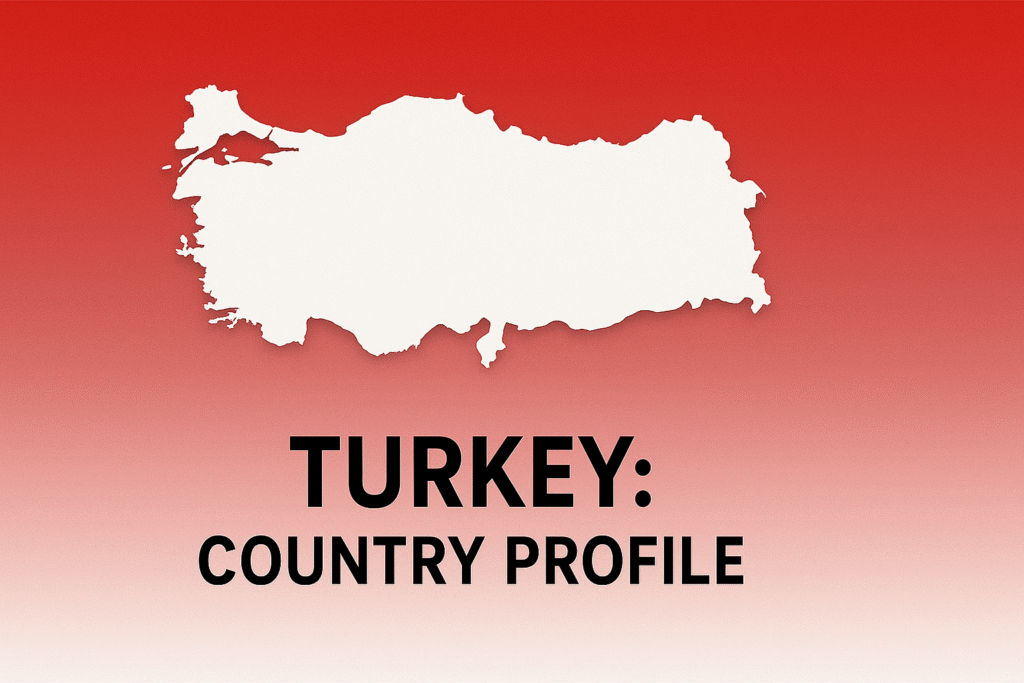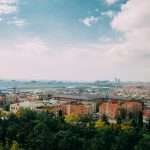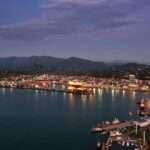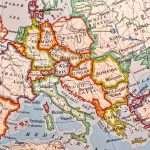In this profile of Turkey, you’ll explore rugged mountains and fertile plains that shaped early civilizations, uncover the strategic crossroads linking Europe and Asia, and trace the rhythms of daily life—from çay ceremonies to whirling dervishes. We’ll dive into its rich history, diverse society, dynamic economy, and cultural traditions that define the republic today.
A transcontinental republic straddling Southeastern Europe and Western Asia that spans the Anatolian peninsula and Thrace, offering a bridge between continents with diverse landscapes, cultures, and a storied history.
Geography & Environment
Covering about 302,535 sq mi (783,356 km²), Turkey spans the Anatolian peninsula and a sliver of Thrace, acting as a land bridge between Europe and Asia. Its terrain reflects the collision of the Eurasian, Anatolian, African, and Arabian plates, giving rise to the North Anatolian Fault Zone—one of the world’s most active seismic belts, infamous for the 1999 İzmit earthquake.
The Anatolian Plateau (Anadolu Platosu) dominates central Turkey, stretching roughly 90,000 sq mi (233,000 km²) at an average 3,300 ft (1,000 m) elevation. Its semi-arid steppes support cereal farming and host key headwaters like the Euphrates and Kızılırmak rivers. To the east, the rugged Eastern Anatolian ranges tower to 16,854 ft (5,137 m) at Mount Ararat (Ağrı Dağı), while the Taurus Mountains (Toros Dağları) along the Mediterranean intercept moist air, nurturing cedar and pine forests.
Coastlines reveal stark contrasts: sandy beaches and Posidonia seagrass beds along the Aegean and Mediterranean, versus the lush, rain-drenched temperate forests of the Black Sea (Karadeniz yağmur ormanları), home to species like Fagus orientalis and brown bears.
Environmental Zones & Biodiversity
| Zone | Climate & Habitat | Key Species |
|---|---|---|
| Mediterranean (Akdeniz) | Hot, dry summers; mild, wet winters; maquis shrubland | Olive (Olea europaea), loggerhead sea turtle (Caretta caretta) |
| Aegean (Ege) | Karst coasts; pine & oak forests; Mediterranean climate | Stone pine (Pinus pinea), Marbled duck (Marmaronetta angustirostris) |
| Central Anatolia (İç Anadolu) | Semi-arid steppe; cold winters; continental climate | Steppe tulip (Tulipa agenensis), Anatolian ground squirrel (Spermophilus xanthoprymnus) |
| Black Sea (Karadeniz) | High precipitation; temperate rainforests | Oriental beech (Fagus orientalis), Eurasian lynx (Lynx lynx) |
| Eastern Anatolia (Doğu Anadolu) | High-altitude alpine; cold, snowy winters | Wild goat (Capra aegagrus), Armenian lily (Lilium armenum) |
Hosting over 9,000 plant species—3,000 endemic—Turkey ranks among global biodiversity hotspots at the crossroads of Europe, Asia, and the Mediterranean.
From seismic highlands to coastal wetlands, Turkey’s varied environments shape its agriculture, ecosystems, and cultural landscapes. Understanding these zones is essential for conservation, disaster preparedness, and sustainable development.
History & Indigenous Heritage
Archaeological finds at Karain Cave (Antalya) and other Paleolithic sites date human presence back to 150,000–10,000 BCE, marking Anatolia as an early hub of prehistoric cultures. Bronze Age central Anatolia saw the rise of the Hattians (Hatti Devleti) and Luwians (Luwiya), whose city-states laid the foundations for later empires. The term Anatolia derives from the Greek anatolḗ (“east”), reflecting its position relative to classical Greece.
Around 1750 BCE, the Hittite Empire consolidated under King Hattusili I, establishing its capital at Hattusa (modern Boğazköy) and pioneering cuneiform administration. Its collapse circa 1200 BCE during the Bronze Age Collapse led to successor Anatolian polities: Phrygia under King Midas, the kingdom of Urartu in the northeast, and Lydia famed for minting the first coins.
From the 8th century BCE, Greek settlers founded affluent coastal cities—Miletus, Ephesus, and Halicarnassus—integrating Anatolia into the Achaemenid Persian Empire by mid-6th century BCE. Alexander the Great’s conquest (334–323 BCE) ushered in the Hellenistic era, later absorbed into the Roman Republic. In 330 CE, Emperor Constantine reestablished Byzantium as Constantinople, cementing Anatolia’s role in Eastern Roman (Byzantine) civilization.
The Battle of Manzikert (1071 CE) opened Anatolia to Turkic migration; the Seljuk Turks founded the Sultanate of Rûm (Land of the Romans) and introduced Islam to the region. The Ottoman Beylik emerged near Söğüt in 1299, expanding into a transcontinental empire. Under Suleiman the Magnificent (1520–1566), it became a preeminent world power, blending Turkic, Byzantine, and Islamic legacies.
Following World War I and the Turkish War of Independence (1919–1923), Mustafa Kemal Atatürk declared the Republic of Türkiye on October 29, 1923, instituting sweeping secular, legal, and linguistic reforms to forge a modern nation-state out of the Ottoman mosaic.
Timeline of Key Civilizations
| Period | Dates | Notes |
|---|---|---|
| Paleolithic & Neolithic | 150,000–3,300 BCE | Karain, Çatalhöyük early settlements |
| Hattian & Luwian Cultures | 2,500–1,750 BCE | Bronze Age city-states with unique languages |
| Hittite Empire | 1,750–1,200 BCE | Capital at Hattusa; early empire law codes |
| Phrygian, Urartian, Lydian Kingdoms | 1,200–334 BCE | Iron Age polities; coinage by Lydia |
| Hellenistic & Roman | 334 BCE–395 CE | Macedonian, then Roman control |
| Byzantine Empire | 395–1071 CE | Christian Eastern Roman rule |
| Seljuk & Ottoman | 1071–1922 CE | Islamic sultanates; transcontinental empire |
| Republic of Türkiye | 1923–present | Modern secular nation-state |
Demographics & Society
As of December 31, 2024, Turkey’s population reached 85,664,944, up from 84.68 million in 2023, reflecting an annual growth rate of 1.16% (nüfus artış hızı). The median age is 33.6 years, while life expectancy stands at 78.6 years (female: 81.5, male: 75.8). Turkey’s Human Development Index (HDI) was 0.838 in 2023, ranking 48th globally.
Age Structure & Urbanization
| Age Group | Percentage |
|---|---|
| 0–14 years | 23.4% |
| 15–24 years | 16.2% |
| 25–54 years | 48.7% |
| 55–64 years | 7.8% |
| 65 years and over | 3.9% |
The urbanization rate (kentleşme oranı) is 76.3%, with major metropolitan areas including Istanbul (15.8M), Ankara (5.6M), and Izmir (4.4M).
Ethnicity, Language & Religion
| Category | Details |
|---|---|
| Ethnic Groups | Turks (70–75%), Kurds (18–20%), Others (Arabs, Circassians, Laz) |
| Languages | Turkish (official), Kurdish, Arabic, Zaza, Lazuri |
| Religion | Predominantly Muslim (99.8%), majority Sunni, significant Alevi minority; small Christian and Jewish communities |
| Literacy Rate | 96.2% overall (M: 98.5%, F: 93.9%) |
Source: TÜİK 2024 Demographic Yearbook, UNESCO, World Bank.
Political & Economic Overview
Government & Administration
Türkiye is a unitary parliamentary republic led by a President (Cumhurbaşkanı) and a unicameral Grand National Assembly (TBMM) of 600 deputies. Since 2018, the executive presidency has consolidated powers, including appointing ministers and high officials. Administratively, the country is divided into 81 provinces (iller), each headed by a governor (vali), and further subdivided into districts (ilçeler).
| Administrative Level | Units |
|---|---|
| Provinces (İller) | 81 |
| Districts (İlçeler) | 922 |
| Municipalities (Belediyeler) | 1,391 |
Economic Profile
With a nominal GDP of $1.32 trillion (2024) and GDP per capita of $15,461, Turkey ranks 16th globally. The economy grew by 3.5% in 2023 amid global headwinds, with inflation at 42.8% (April 2025) and unemployment at 9.7% (Q1 2025). Public debt stands at 38.5% of GDP, reflecting fiscal consolidation efforts.
| Indicator | Value |
|---|---|
| Nominal GDP (2024) | $1.32 trillion |
| GDP Growth (2023) | 3.5% |
| Inflation (Apr 2025) | 42.8% |
| Unemployment (Q1 2025) | 9.7% |
| Public Debt/GDP | 38.5% |
Key Sectors & Trade
- Manufacturing & Automotive: Contributes ~25% of GDP; major exporter of vehicles to Europe and MENA.
- Agriculture: 6% of GDP; leading producer of hazelnuts, cherries, and olives.
- Textiles & Apparel: 8% of GDP; top global supplier to EU fast-fashion brands.
- Tourism: Over 52 million visitors in 2024, generating $42 billion in revenue.
- Energy & Construction: Growing renewable investments; Belt & Road infrastructure projects.
| Export Partner | Share of Exports (2024) |
|---|---|
| Germany | 9.2% |
| UAE | 6.7% |
| UK | 5.8% |
| Iraq | 5.0% |
| USA | 4.5% |
Economic Strategy & Outlook
Türkiye pursues EU accession negotiations, though chapters remain stalled amid political reforms. As a strategic Belt & Road partner, it leverages its logistics hub status with major ports like İstanbul and Mersin. Continued investment in green energy—solar, wind, and geothermal—is planned to meet EU standards and reduce inflationary import dependency.
Culture & National Identity
Turkish culture is a vibrant fusion of Central Asian, Middle Eastern, Mediterranean, and European influences, shaped by millennia of empires and migrations. Concepts like misafirperverlik (hospitality) and görgü (etiquette) remain core to social life, while the language reforms of the 1920s unified linguistic expression using the Latin script.
Traditions & Daily Life
- Tea & Coffee Culture: Over 3 billion cups of çay are consumed annually, served in tulip-shaped glasses with sugar cubes and often paired with lokum (Turkish delight).
- Hospitality: Inviting guests often involves sofra (communal meal) rituals, where sharing meze and pilav (rice) symbolizes respect.
- Folk Arts: Ebru (marbling), çini (tile art), and kilim weaving showcase regional motifs passed down through generations.
Arts & Literature
- Literature: From the 13th-century mystic poetry of Mevlana Rumi to Nobel laureate Orhan Pamuk, Turkish letters reflect societal change and introspection.
- Music & Dance: Genres include Türk Sanat Müziği (classical), aşık ballads, regional folk dances like Horon (Black Sea) and Zeybek (Aegean), and the UNESCO-listed Sufi whirling ceremonies.
- Cinema & Festivals: A rich film heritage celebrated at festivals such as Antalya Golden Orange and Istanbul International Film Festival.
Cuisine & Celebrations
- Culinary Staples: Kebap varieties, dolma, börek, and baklava illustrate regional diversity from Gaziantep to Trabzon.
- Festivals: Religious and secular holidays such as Ramazan Bayramı (Eid al-Fitr), Kurban Bayramı (Eid al-Adha), and Republic Day (Oct 29) unite communities in ritual and celebration.
- Coffee Tradition: Türk kahvesi served after meals, often with coffee fortune-telling (fal).
Religion & Identity
While 99.8% of citizens identify as Muslim (predominantly Sunni with a significant Alevi community), secularism remains enshrined in the constitution. Sufi orders like the Mevlevi and Bektashi contribute to Turkey’s spiritual heritage, blending Islamic and Anatolian beliefs.
Cultural heritage sites—from the Mevlana Museum in Konya to the Whirling Dervishes’ lodges—illustrate the deep intertwining of faith and national identity.
Infrastructure & Connectivity
Türkiye’s transport and digital infrastructure form the backbone of its economy and regional integration. The karayolu ağı (road network) spans over 42,635 mi (68,617 km) of paved highways, including 2,419 mi (3,893 km) of limited-access motorways (otoyol), facilitating freight and passenger flow across all seven geographical regions.
Road & Bridge Networks
- Highways: Major corridors like E80 (European route) and E90 connect to Europe and Iraq.
- Bosporus Crossings: Three suspension bridges—15 July Martyrs Bridge (1973), Fatih Sultan Mehmet Bridge (1988), Yavuz Sultan Selim Bridge (2016)—and the Eurasia Tunnel undersea link (2016) unite Europe and Asia.
- Bridges & Tunnels: Combined daily traffic exceeds 400,000 vehicles, reducing congestion and enhancing intercontinental trade.
Rail & Metro Systems
Türkiye’s railway network totals 11,537 mi (18,563 km), with high-speed rail (YHT) linking Istanbul, Ankara, Eskişehir, Konya, and Sivas. The Marmaray and Başkentray urban rail lines facilitate 600,000 daily commuters in Istanbul and Ankara. Metro systems in major cities like Istanbul (Metrobus, M1–M9 lines) and İzmir add over 1,200 mi (1,930 km) of urban rail.
Air & Sea Ports
| Facility | Capacity / Traffic |
|---|---|
| Istanbul Airport (IST) | 90 million passengers (2024) |
| Sabiha Gökçen (SAW) | 35 million passengers |
| Mersin Port | 25 million tons cargo |
| İzmir Port | 12 million tons cargo |
Digital Connectivity
Nationwide 4G coverage reaches over 98% of the population, with 5G trials in Istanbul, Ankara, and Izmir. Fiber-optic backbone exceeds 120,000 mi (193,121 km), and the Türkiye Ulusal Genişbant Stratejisi aims for 100 Mbps minimum speeds in all provinces by 2026. Public Wi-Fi (Turkcell & Türk Telekom) and e-Government (e-Devlet) services integrate digital access into daily life.
Challenges & Future Outlook
Modern Türkiye navigates a complex web of challenges and opportunities. Persistent economic volatility—marked by high inflation and currency fluctuations—tests household resilience, while youth unemployment and regional disparities strain social cohesion. Geopolitically, border tensions with Syria and Iraq, strained relations with Greece and Armenia, and the integration of over 4 million refugees demand sustained diplomatic and humanitarian efforts.
Environmental pressures compound these issues: Southeastern Anatolia’s water scarcity, amplified by climate change, threatens agriculture and urban supplies, while seismic risk along the North Anatolian Fault necessitates rigorous earthquake preparedness and resilient infrastructure.
Key Challenges
- Economic Stability: Taming inflation, stabilizing the lira, and reducing external debt dependency.
- Migration & Integration: Ensuring education, employment, and social services for refugee populations.
- Climate & Resources: Managing water scarcity, sustainable agriculture, and coastal ecosystem protection.
- Seismic Risk: Upgrading building codes and retrofitting critical infrastructure after major earthquakes.
- Regional Diplomacy: Balancing relations within NATO, negotiating Eastern Mediterranean energy disputes, and advancing EU accession talks.
Future Outlook
Türkiye’s strategic vision embraces digital transformation, with growing tech hubs in Istanbul and Ankara fostering startups in fintech, AI, and renewable energy. Continued investment in solar, wind, and geothermal projects aims to reduce energy imports and meet climate goals. Tourism rebound, boosted by heritage site conservation and sustainable travel initiatives, promises improved foreign exchange earnings. If economic reforms and regional cooperation proceed, Türkiye can leverage its transcontinental position to emerge as a resilient, diversified regional leader by 2030.
FAQ
How many UNESCO sites are in Turkey?
Turkey is home to 21 UNESCO World Heritage Sites, from Göreme National Park to Ephesus.
What is the official language?
Turkish is the official language; Kurdish, Arabic, and minority languages are also spoken regionally.
When was the Republic founded?
The Republic was proclaimed on October 29, 1923, by Mustafa Kemal Atatürk.
What is the population?
As of December 31, 2024, 85,664,944 people.
What Did We Learn Today?
- Strategic transcontinental location bridging Europe and Asia.
- Rich tapestry of civilizations from Hittites to Ottomans.
- Population of 85.7 million, median age 33.6 years.
- 16th-largest economy ($1.32 trillion) with diverse industries.
- Cultural landmarks: whirling dervishes, Ottoman architecture, tea gardens.





